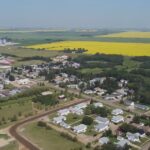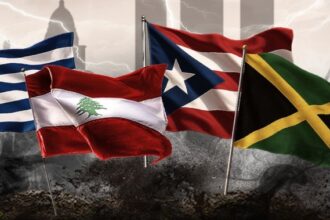Smoke billows on the horizon as families hastily pack whatever they can carry. For thousands of northern Saskatchewan residents, the nightmare of forced displacement has returned this week, triggering memories of previous evacuations and raising questions about the future of their communities.
More than 6,800 people have been forced to flee their homes across several northern Saskatchewan communities as massive wildfires threaten residential areas and vital infrastructure. The evacuations, affecting residents from communities including La Loche, Clearwater River Dene Nation, and Black Lake First Nation, represent one of the largest displacement events in the region’s recent history.
“It’s difficult to describe the feeling of leaving your home behind, not knowing if it will be there when you return,” said Marie Janvier, a La Loche resident now staying at an evacuation center in Saskatoon. “This is the third time in eight years we’ve had to evacuate. Each time, the emotional toll gets heavier.”
The Saskatchewan Public Safety Agency reports that approximately 20 active wildfires are burning in the north, with several classified as “out of control.” Strong winds and unusually dry conditions have accelerated the spread, challenging firefighting efforts despite deployment of additional resources from neighboring provinces.
For Indigenous communities in the affected areas, the evacuations carry additional layers of trauma. Elder Joseph Montgrand from Clearwater River Dene Nation explained, “Our connection to the land is spiritual and cultural. Being displaced doesn’t just mean losing a house – it means being separated from our traditional territories and practices that define who we are.”
Provincial authorities have established emergency shelters in Prince Albert, Saskatoon, and Regina, but evacuees report mixed experiences. While basic needs are being met, the psychological impact of displacement remains a significant concern, particularly for children and elderly residents.
“We’re seeing signs of distress, especially among those who lived through previous evacuations,” noted Dr. Sarah Connors, a psychologist volunteering at the Prince Albert evacuation center. “The uncertainty creates anxiety, and being in unfamiliar surroundings compounds the stress.”
The economic impact extends beyond immediate firefighting costs. Local businesses in evacuated communities face prolonged closures, and critical infrastructure, including the main highway connecting several northern communities, has been compromised by fire damage.
Saskatchewan Premier Scott Moe visited evacuation centers yesterday, pledging provincial support and acknowledging the severity of the situation. “We are mobilizing all available resources to combat these fires and support affected residents,” Moe stated. “The safety of northern residents remains our highest priority.”
Climate scientists point to a troubling pattern. Dr. Elena Petrova, climatologist at the University of Saskatchewan, explained that northern regions of Canada are experiencing warming at nearly three times the global average. “What we’re seeing is consistent with climate change projections for the region – longer, more intense fire seasons with increased frequency of extreme weather events.”
For evacuees, immediate concerns focus on when they might return home and what they’ll find upon arrival. Previous wildfire evacuations in the region have lasted from days to weeks, creating significant disruption to education, healthcare access, and employment.
“The hardest part is not knowing,” said Robert Cardinal, a teacher from Black Lake First Nation. “We had just fifteen minutes to gather our things. My students’ school year has been completely disrupted, and this uncertainty makes it impossible to plan for resuming classes.”
As emergency response teams work to contain the blazes, questions loom about long-term solutions for northern communities increasingly vulnerable to wildfire threats. Will infrastructure investments in firebreaks and emergency response capacity match the growing risk? Can traditional Indigenous knowledge about land management be better integrated into fire prevention strategies?
For now, evacuees wait and hope, their communities temporarily scattered but their resolve unbroken. As northern Saskatchewan faces this latest challenge, the resilience of its people stands in stark contrast to the uncertainty of when they might return to the places they call home.

























